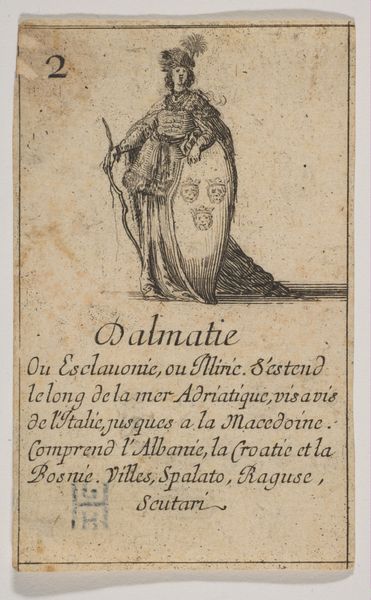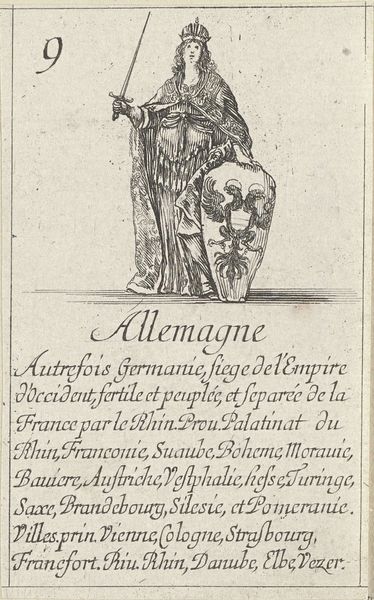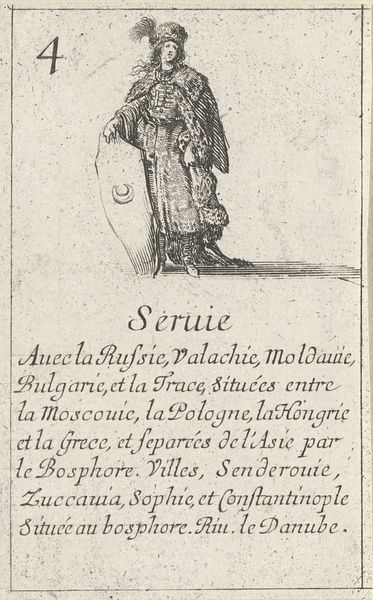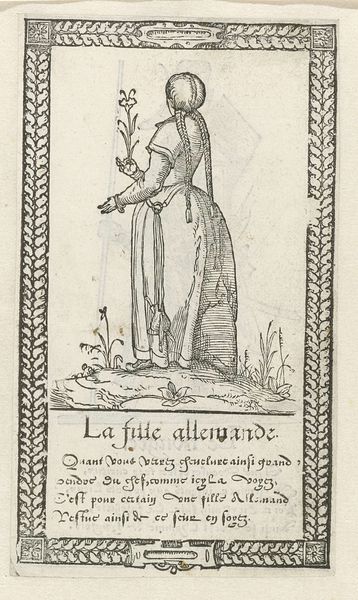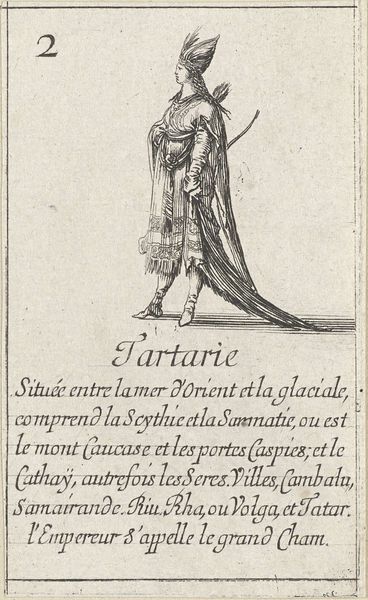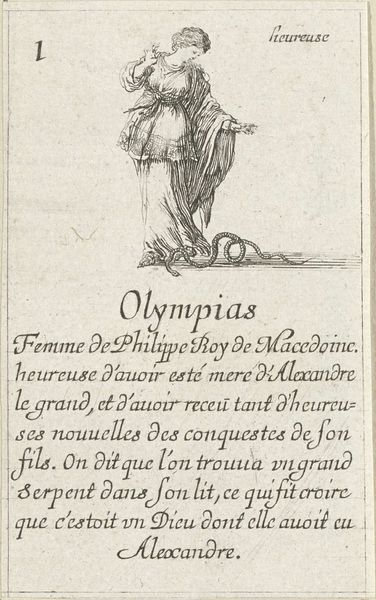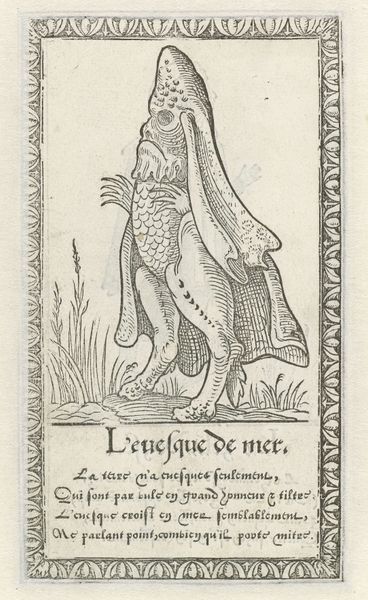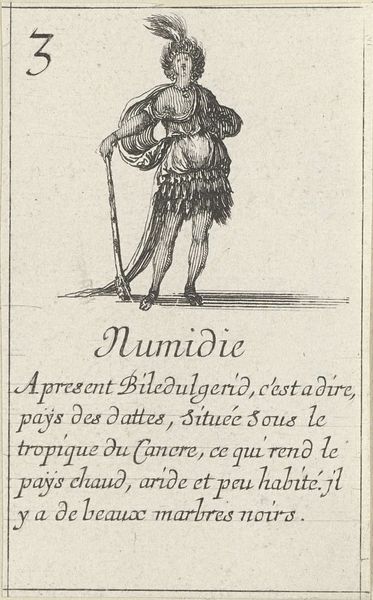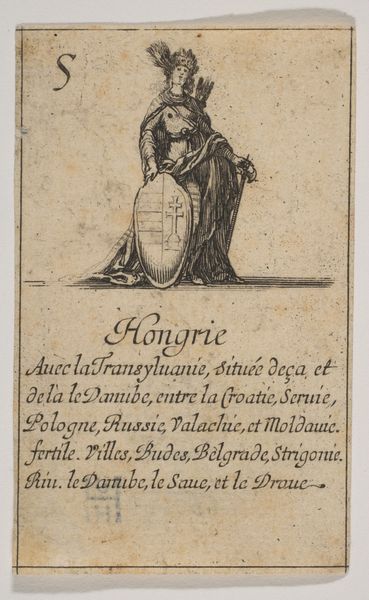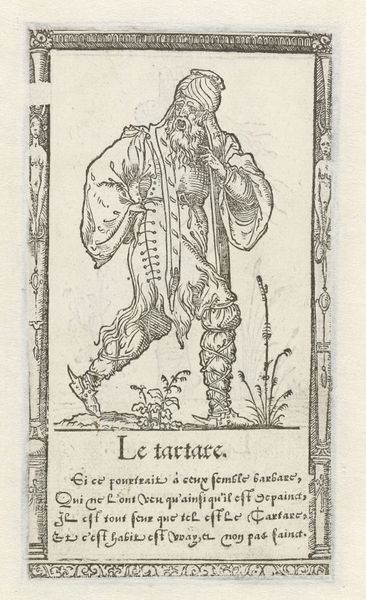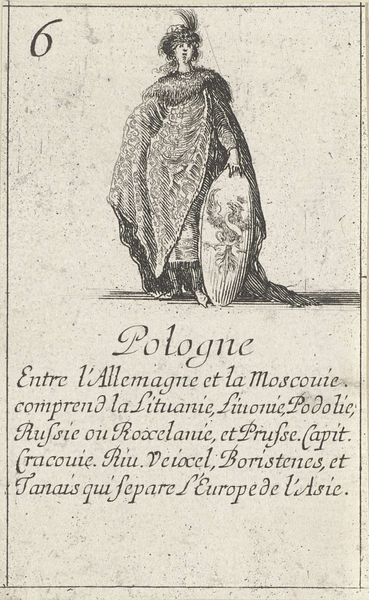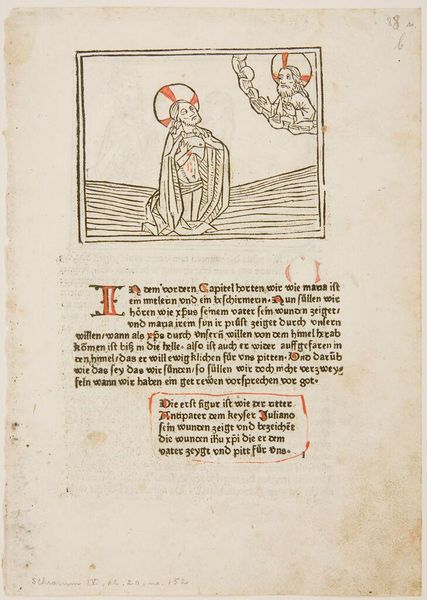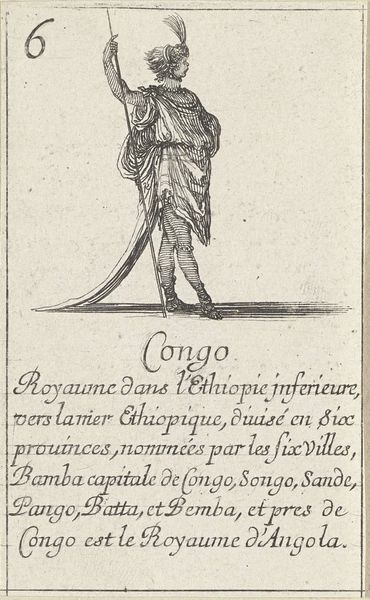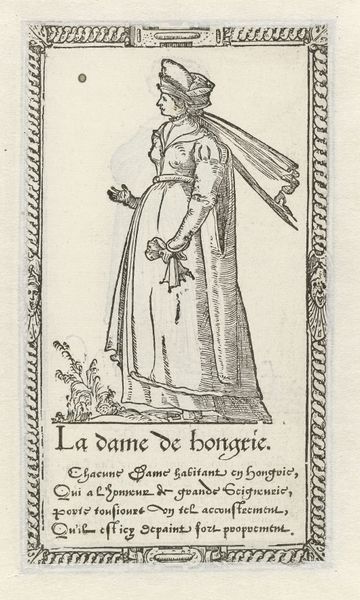
print, etching, engraving
#
portrait
#
baroque
# print
#
etching
#
old engraving style
#
history-painting
#
engraving
Dimensions: height 89 mm, width 55 mm
Copyright: Rijks Museum: Open Domain
Editor: This etching, "Vrouw uit Dalmatië" by Stefano della Bella, dating between 1620 and 1664, depicts a woman standing proudly with a shield. I’m struck by how this portrait attempts to capture an entire region in a single female figure. What do you see in this piece, particularly concerning its representation of Dalmatia? Curator: This image is powerful in its construction of Dalmatia through the lens of European power dynamics of the 17th century. Notice how the female figure, likely an allegorical representation, is adorned in clothing that is probably more imagined than accurately reflecting Dalmatian attire. Consider, too, the weapon, the adornments, and the figures on the shield – how do they reinforce ideas of a region needing to be both defended and defined by external forces? Editor: So, it’s not necessarily about a true depiction, but about constructing an idea of Dalmatia? Curator: Precisely. These "portraits" of regions often served to categorize and, in a way, claim authority over those regions. This engraving needs to be seen within a historical context of expanding empires and the "discovery" and representation of new territories, peoples, and resources. How do you think this image might have been received and understood by different audiences at the time? Editor: I guess someone from Dalmatia might have a very different perspective than, say, a member of the European elite looking at this. It's a reminder that representation is never neutral. Curator: Exactly! And recognizing that inherent bias encourages a more critical understanding of not just this artwork, but the systems of power at play during its creation. Editor: It definitely shifts my understanding from seeing a simple portrait to recognizing its role in a larger geopolitical narrative. Thank you! Curator: My pleasure. It’s through such contextualization that we can uncover the deeper layers within seemingly straightforward images.
Comments
No comments
Be the first to comment and join the conversation on the ultimate creative platform.
